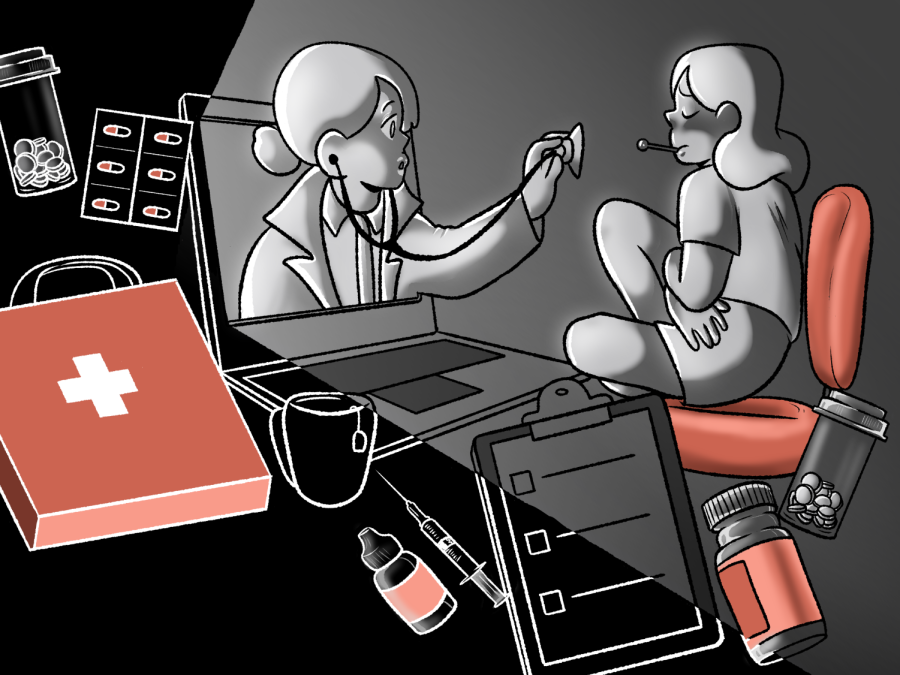Lower the cost of appointments at University Health Services
February 10, 2022
It’s an undeniable truth of college that you will eventually get sick. Whether it’s from COVID-19, a nasty cold or the “frat flu,” students will end up needing to go to the doctor at some point during their time on the Forty Acres. Luckily, UT offers health appointments through University Health Services. However, these appointments, which can either be in person or a telehealth appointment over Zoom, can be much more expensive than they seem.
UT must decrease the price of its health appointments. These appointments often only consist of a consultation with a doctor, sometimes not even in person, yet students are still charged inordinate prices. The cost of the health appointment does not include the price of medication, so students could end up paying much more than intended.
There are several potential solutions to this problem. University Health Services could adopt a similar policy as the University’s Counseling and Mental Health Center, where students are allowed one free consultation. Even though CMHC requires less equipment than health services, and is therefore allowed more flexibility when it comes to pricing, a simple consultation –– especially if it’s a telehealth appointment –– should not cost students money. Another potential option is allowing students to have a set number of free appointments before charging the full price or merely reducing the cost of telehealth appointments.
According to the University Health Services website, health appointments for students are $10, but this price can increase based on appointment type and insurance. While the website does have information about the baseline price for all students and the cancellation fee, there is no information regarding how much different appointments will typically cost. Students have no idea how much they’ll be charged until after their appointment.
In an attempt to alleviate the financial burden on students, University Health Services offers the Student Administrative Health Fee. The goal of the fee is to take on some of the financial responsibility for students. The fee also offers less expensive prices than those in the greater Austin community.
“(Appointment prices) are a lot less compared to what you would get out in the (Austin) community,” said Monica Dowd, the associate director of business services for UHS and CMHC. “If you’re uninsured, it’s considerably less because you would have to pay for that visit out of pocket.”
While the fee is a good effort by University Health Services to reduce the cost, low prices are not guaranteed for students with insurance. There are also many exceptions to appointments that appear to fall under the $10 cost, such as preventative physical exams or annual women’s health exams. Appointment prices could also be higher if students require some kind of test, like a flu test.
“They are really honest about pricing,” undeclared business freshman Olivia Flaming said. “But (the $10 fee) could be a ton to a student who’s paying (for) school, rent, books, everything at once.”
University Health Services is receptive to the idea of changes.
“We’re always trying to find ways to provide care to students that’s free or at a significantly reduced price, so that they’re not avoiding that care,” Dowd said. “Our number one goal at UHS is that students obtain the care they need, but it doesn’t put them in a financial crisis.”
It is not fair to sick students to charge such high prices, especially during a pandemic. If University Health Services truly wants to help students get the care they need without creating a large financial responsibility, they must find more options to make health appointments more accessible to students.
Abbe is a communications studies and government sophomore from Fort Worth, Texas












